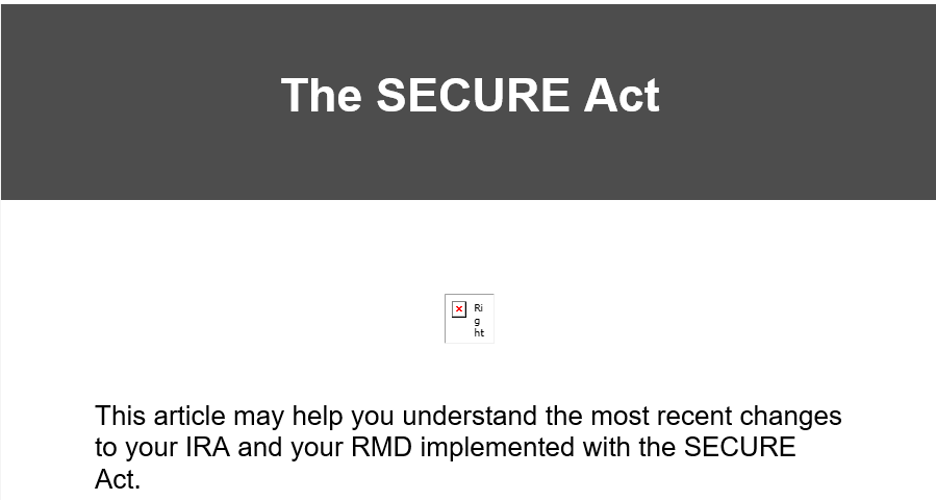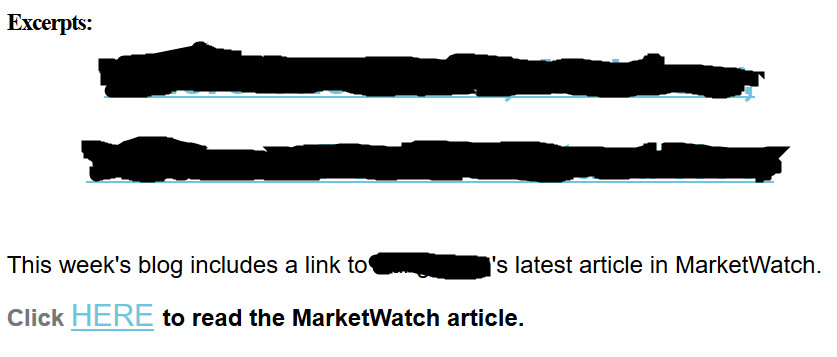Financial advisors with tight budgets and limited time sometimes buy ready-to-use content from publishers who offer a library of resources. I list some of them below, including links to their sites. I am not endorsing any of them. Some of the content comes from names that I know, such as Litman Gregory, Wendy Cook, and Bob Veres’ Inside Information.
Using ready-to-use content
These resources typically offer ready-to-use content that can be presented as if it has been created by the advisory firm that shares it. This is different than curated content, with which you share material (or links to material) for which its creation by a credible third-party source is part of its appeal.
Please check that the content is right for your firm. Some of the resources cater more to registered representatives (including getting content preapproved by FINRA), while others may appeal more to registered investment advisors.
Each resource is listed in alphabetical order with a description provided by the resource.
The marketing professionals who told me about some of these resources have a good tip for you. When you buy standardized content, do something to customize it, to make it yours, assuming this is allowed by the terms of your agreement with the provider. I’ve written about this in Canned newsletters can hurt your marketing.
Sources of ready-to-use content for advisors
AdvisorFlex says:
Tired of the boilerplate market commentary available from many of the industry marketing services? Don’t have time or staff expertise to create your own? Want to differentiate your firm? Let AdvisorFlex do it for you. They provide market commentary for your practice, custom written monthly articles, custom website copywriting or editing, automated content marketing, and RIA branding services.
Advisor Products says:
Business websites that post new content consistently get their pages indexed by search engines 434% more than the sites who don’t. Blogs and articles using keywords that are relevant to your target audience help Google improve your ‘relevancy’ score [and] your rankings.
Broadridge says:
Differentiate your advisors as thought leaders. Expand your advisors’ library of resources and save time by leveraging original content created by our team of in-house subject matter experts. Advisors can share content with their audiences, quickly respond to requests for information and convert more clients with custom presentations.
Inside Information says:
Receive articles and cartoons to send to clients, use in quarterly newsletters or as part of your drip-marketing campaign. This service may NOT be sent to centers of influence or professionals.
Litman Gregory AdvisorIntelligence says:
White-Labeled Materials to Guide Your Client Conversations
One of our goals with our AdvisorIntelligence service is to make available everything we do in our own practice that might be of value to other advisors. Beyond the considerable resources we devote to providing our research and investment strategy, we also share the communications we use to establish and maintain our client relationships. Importantly, through our communications, we seek to instill client confidence in our competence, investment approach, and core values (integrity, excellence, passion, and courage). This sets the foundation for a successful, long-term client relationship and requires clear and regular communication around our investment philosophy, approach, and the reasoning underlying our decision-making on our clients’ behalf.
MarketingPro says:
Downloadable and professionally pre-written content with compliance review built right in. Keeping up communication with clients and prospects is pivotal to the success of your practice, but why waste time trying to draft your own messages, then wait weeks for compliance review? Our MarketingLibrary service offers Financial Professionals 24/7 online access to high-quality, high-impact content written by seasoned financial copywriters. And if your Broker/Dealer supports the system (hundreds do), the content you need may be pre-reviewed and approved for immediate use. Thousands of messages, with new content added every week – all for one low monthly fee.
Wendy J. Cook Communications says:
Wendy offers a content-sharing library with affordable, turnkey content written especially for use by the evidence-based advisor. For your client letters, e-newsletters, video scripts and more, stop settling for tired financial speak that doesn’t speak to you. Also, custom content.
Warning from my experience with this list
I originally created this list on Storify, a platform for sharing content. I kept it off my blog because I didn’t want to seem to endorse any providers. However, one day I tried to access my list, and found that it had disappeared. Oops, Storify had gone out of business!
Any time you share content only on a third-party platform, you run the risk of losing it. I’ve blogged about my earlier experience with this in Ouch, LinkedIn, why did you do that to me?
Luckily, I was able to recover my list using the Wayback Machine. However, it was a tedious process. I could have made my life easier by posting this list on my blog from the beginning.





 When I clicked on the two blacked-out lines, which are clearly meant to be clickable links, they took me to a post on the company’s blog. The content on the page? Exactly what you see in the image above.
When I clicked on the two blacked-out lines, which are clearly meant to be clickable links, they took me to a post on the company’s blog. The content on the page? Exactly what you see in the image above. Please stop talking about how great your content makes YOU feel.
Please stop talking about how great your content makes YOU feel.